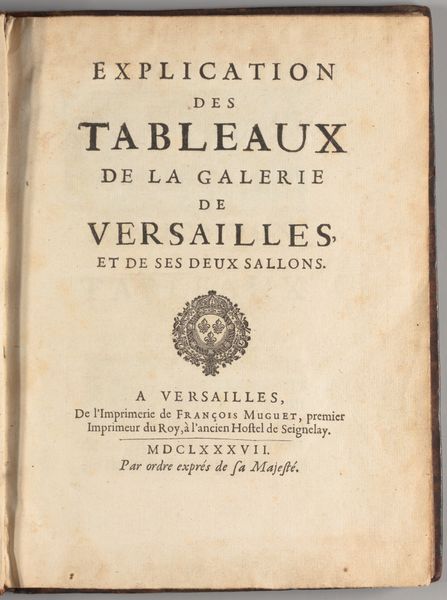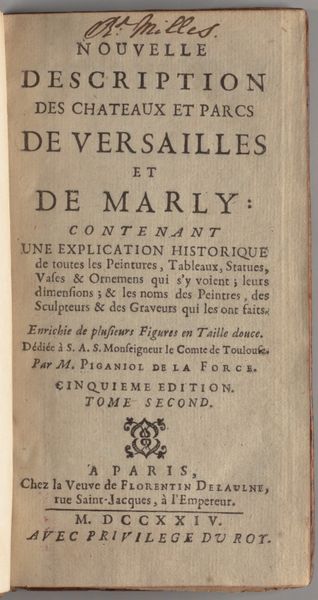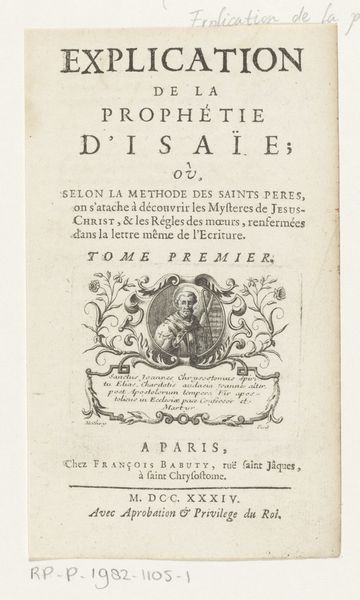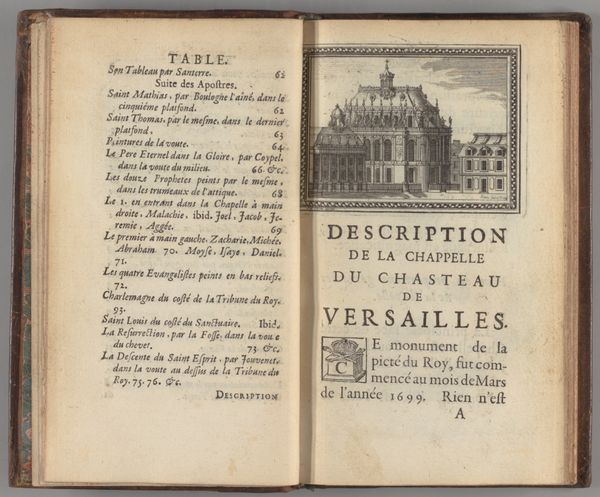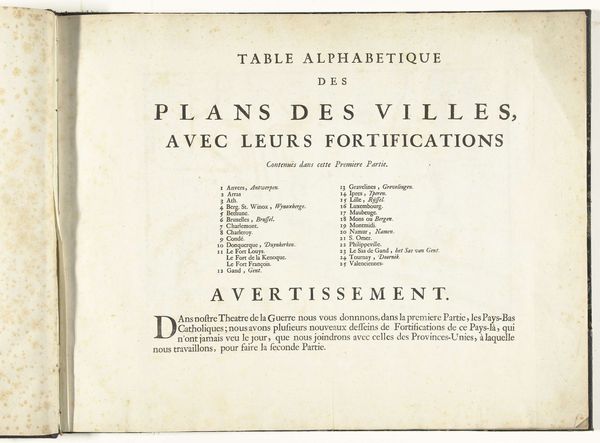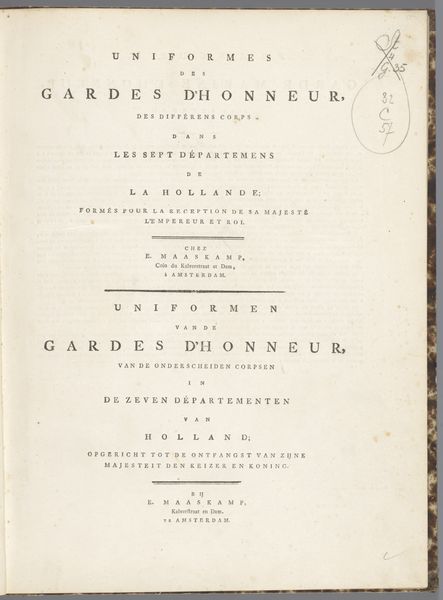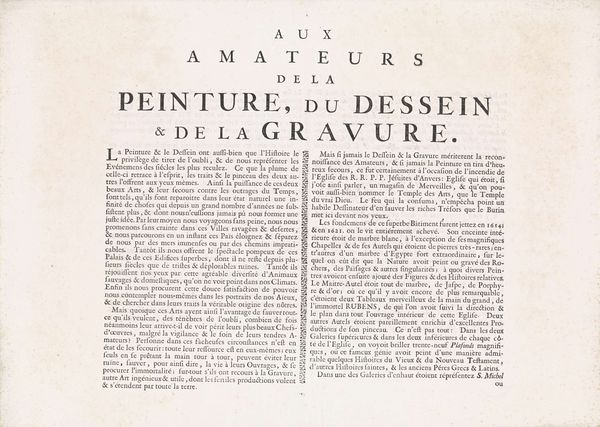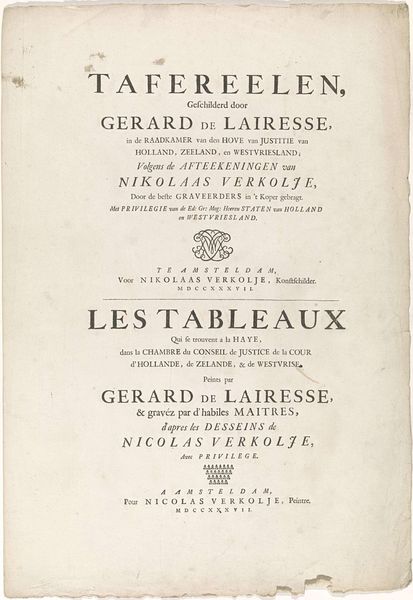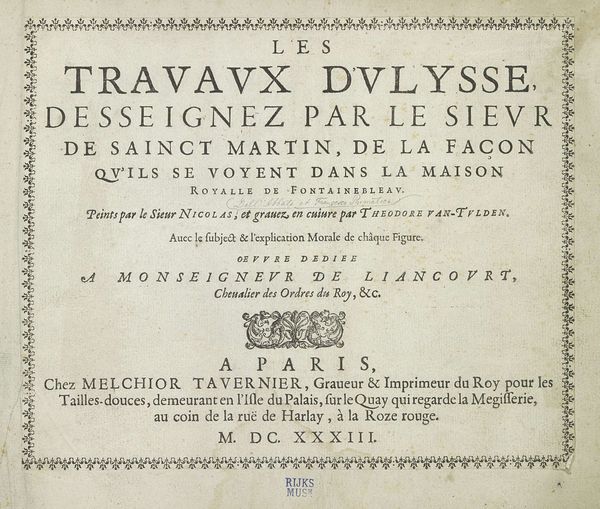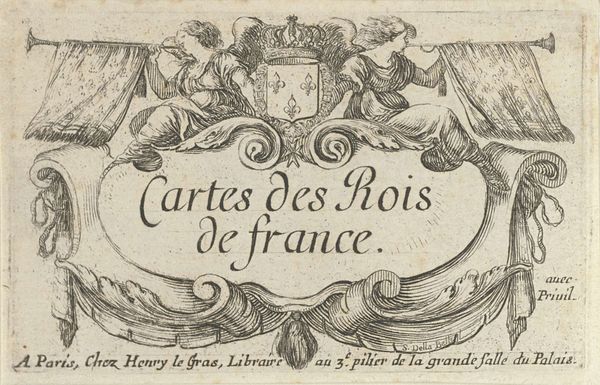
Voyage pittoresque des environs de Paris, ou, Description des maisons royales, châteaux & autres lieux de plaisance, situés à quinze lieues aux environs de cette ville 1762
0:00
0:00
print, etching, engraving
# print
#
etching
#
book
#
history-painting
#
engraving
Dimensions: 24, 407 pages, 1 leaf of plates : illustrations ; Height: 6 11/16 in. (17 cm)
Copyright: Public Domain
Editor: Here we have the title page of Antoine Nicolas Dezallier d'Argenville’s “Voyage pittoresque des environs de Paris,” published in 1762, using etching and engraving for the print. The typography really grabs me; it's so formal and precise. What strikes you about it? Curator: What I find interesting is its status as both art object and commodity. This book wasn't just passively consumed; it was manufactured, distributed, and purchased. Consider the labour involved in its production: the papermaking, the typesetting, the printing, the binding... all tangible processes that reflect the economic and social structures of 18th-century France. Editor: So, you’re seeing it as a product of its time, tied to the means of production. But does focusing on its materiality take away from its artistic merit? Curator: Not at all! Understanding the materials – the paper, the ink, the metal plates used for the engravings – and the labour that went into creating them allows us to appreciate the artistic choices made within the limitations of those materials. This isn’t just about royal houses; it’s about the entire system that supported their image. What kind of access did the middle classes have to depictions of such grandeur? Editor: I see your point. The “Approbation & Privilege du Roi” at the bottom is another layer; even its dissemination was controlled. Curator: Precisely! The book's existence speaks to the power structures inherent in the art world and wider society, reminding us that art, even ostensibly about beauty and pleasure, is always intertwined with economics and control. Editor: Thinking about the labour and regulation definitely gives a different perspective. Thanks for pointing that out. Curator: My pleasure! It's all about appreciating the art object within its complete material and social context.
Comments
No comments
Be the first to comment and join the conversation on the ultimate creative platform.

